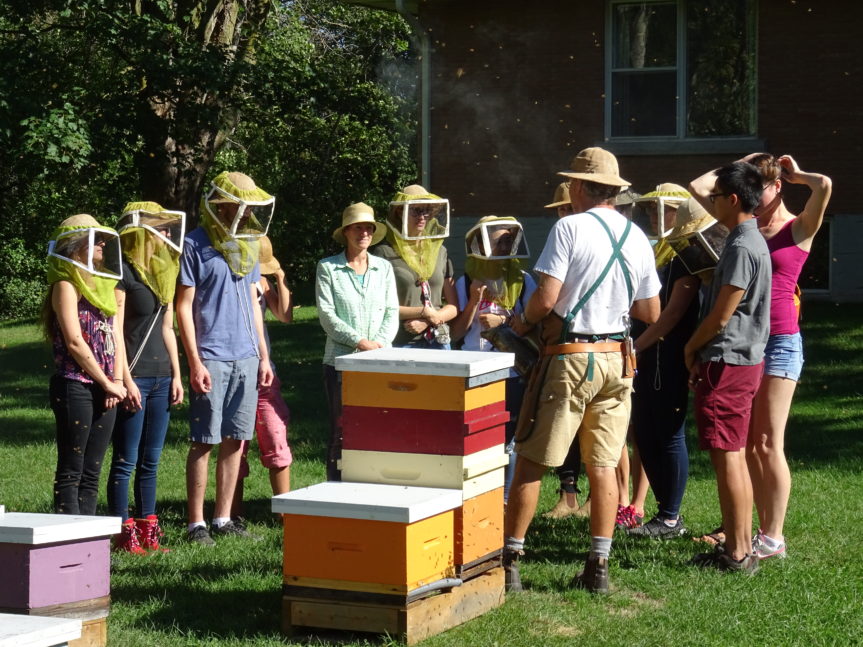
On Tuesday, November 27, our outdoor school class travelled to the arboretum’s nature centre for a class that was destined to be exciting – bird banding. We met with Chris Earley, a master bird bander who told us a bit about the ups and downs of bird banding and how it is normally conducted. Chris and Rachel rigged up a couple of ground traps and the waiting game began. We went back inside the nature centre and discussed bird banding for a few minutes. When we came back out, we had already caught a few chickadees!

In the H is for Hawk video we listened to Helen talk about how she used to take her hawk out to an open field and let it fly around. I looked at the chickadees, which kept biting Chris while he held them and flew away out of our hands as soon as we opened them, and I was completely stunned. That woman trained a hawk by herself and used it as sort of an outlet for the struggles she was going through. These fierce little chickadees made me realize what an incredible feat it is to train a wild bird which is absolutely massive and has the power to harm you. It also makes me realize how much work the volunteers at Wild Ontario must also put into training their falcons.
Chris showed us how to band the birds, and taught us some tips that he uses to identify certain aspects of each bird. When you band a bird, it must be over a year old. This is because there are few birds born in the arboretum who stay there for their entire life. This means that if every single young bird caught was banded, there would be many that would never be seen again which would waste a lot of bands. There are also four bands put on a bird which are read in a certain order to identify the bird, such as blue over orange, silver over yellow. The arboretum has nine different colours which means that there are over three thousand combinations available for a bird’s bands. The arboretum has banded about five hundred birds at a rate of about one hundred per year, so they are not likely to run out of combinations anytime soon.

For each bird, he would record the type, the numbers and colours on the band (if it wasn’t banded and was over a year old, he would band it and record the colours) where and when it was caught, the weight and the age. All the information collected is entered into a database where bird banders all across north America can view and track these birds. This reminds me of the first reading we did, where nature as a selling point was discussed. At the arboretum, nature is used to educate others in hopes to preserve and help the environment. For example, Rachel’s nature walks are of no charge, and the only point of them is to enjoy nature and educate people, instead of selling or profiting off of it.

In total we were able to capture and record around ten birds, nearly all of which were chickadees with the exception of one mourning dove. Before we left Chris showed us his magnificent bird impressions which were so realistic and absolutely amazing to hear! This was one of my favourite classes and sadly it was one of our last. I will never forget the unforgettable experiences I have had during Outdoor School this semester.
Ruth Myers














































You must be logged in to post a comment.